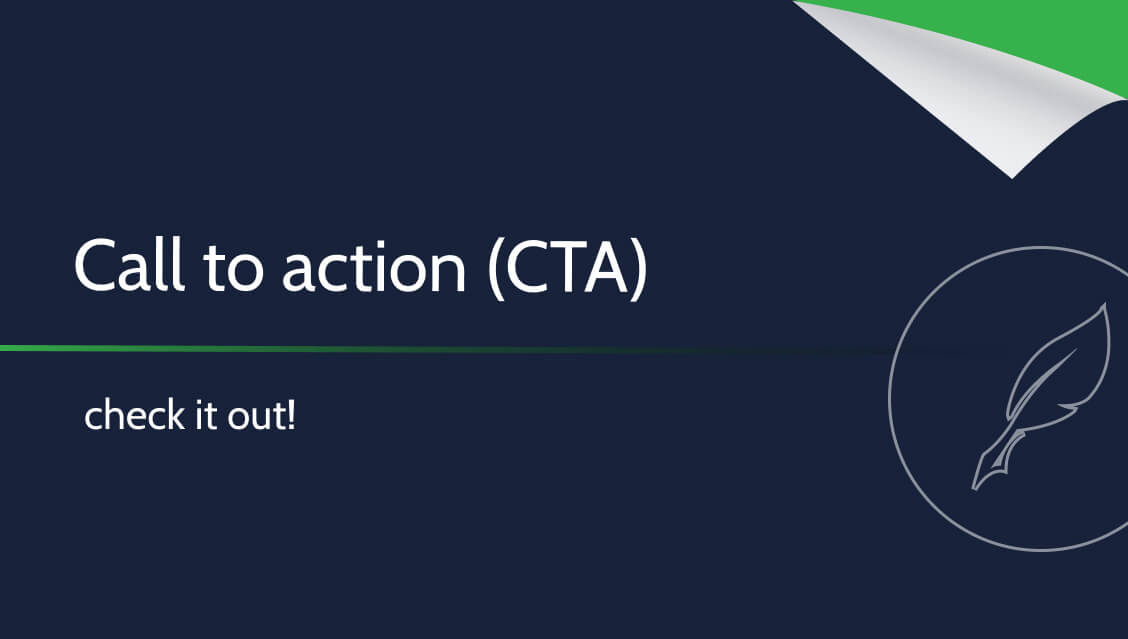Call to action (CTA) – Check it out!


There is an arms race between online stores in search of ways to achieve higher conversions. The situation is no different for websites that want to maximize the benefits of generated traffic. In this marketing chaos, it is worth remembering the basic element of effective content: call to action, to which we devote this article.
What is CTA?
Call to action is a short slogan, usually placed at the end of a text, urging the reader to take a specific action.
The desired action may be adding a product to the cart, subscribing to the newsletter, entering a discount code or simply visiting the website.
Benefits of call to action:
- increase in conversions – readers will be more likely to perform the actions they are encouraged to take, which increases the sales potential of the store or website;
- lower advertising costs – on platforms based on an auction system (Google Ads, Facebook Ads), more effective campaigns reduce advertising costs because they are more attractive and interesting to readers;
- increased positioning – a higher CTR in organic results has a positive impact on gaining better visibility in the search engine.
In practice, CTA is often synonymous with phrases such as “Don’t wait, buy now!” or “Come here and see more” or our headline “Check it out”. Although such slogans may seem like obsolete, they are worth using for one reason – they do not take up much space, just one sentence, and the impact of call to action is still visible in the statistics. Therefore, we are dealing with a solution that, with a small amount of work, can bring measurable results.
Of course, the above examples are the simplest pattern to use in the case of a place where the character limit is strictly limited, e.g. for meta title and meta description.
However, if we have more room for maneuver, as in the case of landing page content or website texts, it is worth taking care of more sophisticated strategies, which we will discuss later in the article.
How to create effective call to action?
There are several methods to increase the effectiveness of CTA. One of them is to create time pressure:
- Positive: “Order the product within 3 hours and receive it for free!”
- Negative: “Last hours of promotion – don’t miss the opportunity!”
This is a simple trick to additionally create the phenomenon of a lucrative transaction and the feeling that you have made a good choice.
Another strategy, used just as often, is to provide social proof:
- “70% of Poles already use product X. Join them!”
- “40% of store people use this software and make profits. And you?”
Another solution is to gratify the solutions that we envisage anyway:
- “Pay by card and get N5,000 discount!”
- Buy phone X and get the case for half the price!
This brings us to an important conclusion:
A call to action can be formulated in different ways, depending on the business goal and industry.
There are no universal rules that will prove effective in every case, so the key again – as in the case of all copywriting – is an individual approach to the activities carried out.
It is worth mentioning that in more extensive strategies, CTA is closely linked to the offer, creating the “good opportunity” effect, which can enhance conversion results.
Regardless of the intended plan, a call to action is an element that simply must appear in the content. With a little effort, it can improve the results, which is why it is undoubtedly the copywriting “cherry on the cake”.

Toyin Emmanuel
I am a creative & seasoned writer who has an internationally recognized flair for weaving keywords to produce engaging and informative content. I believe that written and analytical skills are fundamental to a website's success and possess top-notch prowess in Search Engine Optimization(SEO), WordPress, and Google Analytics and how they apply to content creation. In addition to being a successful writer on Upwork, I also hold various certifications from respected platforms(like Udemy and Coursera) so you can be confident in working with a professional Web Content Writer and Copywriter.Your comment has been added and is awaiting approval.
Blog
Recent articles
Similar articles
Popular articles
-
Who is a copywriter – How to become a copywriter?
-
Characters with or without spaces – Is it a good metric for determining articles prices?
-
Content re-purposing – key to effective use of content
-
Omnichannel content marketing – what is it and what exactly is it used for?
-
Writing goals – what is it and how does it help copywriters?
Copywriting
-
Creative copywriting – breaking out of regular thinking patterns
-
SEO copywriting examples – principles of content positioning
-
Copywriting in integrated marketing communication – how does it work?
-
Best copywriting services – what are the best copywriting services?
-
Copywriting checklist – rules for high converting marketing contents
Content Marketing
E-commerce
Marketing
-
Drip marketing – what is it and what is it used for?
-
Marketing goals – how to set them and what must be included
-
What are the elements of marketing? The complexity of business in the 21st century
-
Direct response copywriting – the key to effective marketing
-
Digital marketing in a nutshell – all you need to know
















Leave a Reply